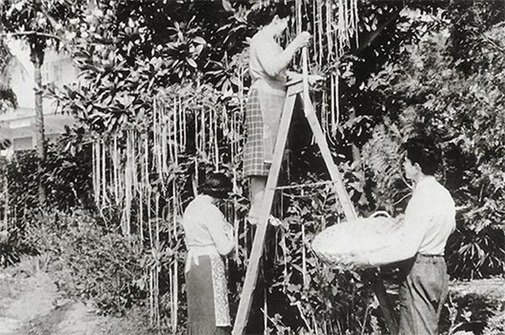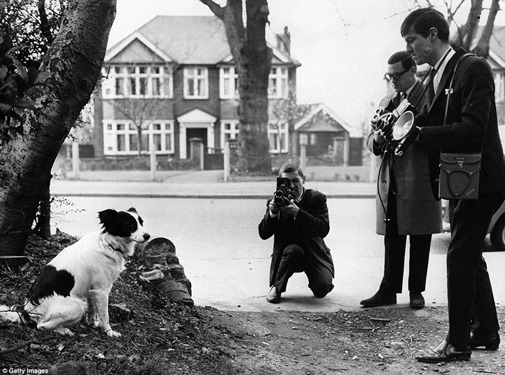Sunshine has returned to the capital following four days of dense fog in which London transport was brought to a standstill. The atrocious conditions led to widespread disruption of rail, road and air services and affected shipping on the River Thames.

As freshening winds and milder temperatures dissipated the fog today London buses and coaches ran normally but still with some delays on the Southern Region railway.
The fog, which began on 5 December, also affected other areas of the south-east, with icy roads causing several road accidents. Ambulance men and firemen had to walk ahead of their vehicles to reach those in need. It also spread as far as northern France, Belgium and the Netherlands.
A cross-channel ferry carrying 300 passengers from Folkestone to Calais was 15 hours late. The ship had to anchor off the French coast, unable to get into port due to poor visibility.
Virtual shutdown
Fog descended on London once again yesterday evening at the end of a relatively clear day.By 18:30 London Transport reported a virtual shutdown of its north-east London service and nearly all buses were out of action.
Only the London Underground was still running, but as buses stopped running once visibility was reduced to a few hundred yards this too became congested. At Stratford, on the Central Line, 3,000 people queued for tickets.

London Airport was also severely affected – BOAC reported just two departures and four arrivals yesterday. All other flights were diverted to Hurn, near Bournemouth and passengers were taken by train to Waterloo.
Crime spree
The severe weather conditions led to a rise in crime as robbers used the cover of fog to break into houses and shops and attack and steal from Londoners making their way home in the darkness.
The weather even affected cattle brought into Earls Court in preparation for the Smithfield Show. Farmers spent hours trying to reach the capital and when they finally arrived found many livestock had breathing difficulties. At least one animal died.
Opera and football cancelled
There was no escape from the fog inside either, as it seeped into buildings as well as filling the streets. Last night, the Sadler’s Wells theatre had to end a performance of La Traviata after the first act because the auditorium had filled with fog.

The fog also took its toll on several sporting events. A University Association Football due to take place at Wembley was postponed. It is the first time any fixture has been cancelled at the stadium since it opened in 1923.
Most rugby matches were cancelled and no Association Football League matches took place in London
In Context
In the weeks following what became known as the Great Smog of 1952, it emerged that at least 4,000 people had died as a direct result of the weather.
They were mostly the elderly, the very young and those with respiratory or heart problems.
The main causes of the smog were by-products of coal-burning that had reached exceptionally high levels combined with high pressure, near-freezing temperatures and very light winds that meant the smog lingered for several days.
The authorities realised that drastic action was needed introduced the Clean Air Act in 1956.
It restricted the burning of domestic fuels in urban areas with the introduction of smokeless zones, but heavy fogs continued for some time after the Act while residents and operators switched to new sources of energy.
The Act was revised in 1968 when industries burning coal, gas or other fuels were ordered to use tall chimneys. In 1974 the first Control of Air Pollution Act introduced regulations on the composition of motor fuels.
By the 1980s and 1990s the increasing use of the motor vehicle led to a new kind of smog caused by the chemical reaction of car pollutants and sunshine.
The 1995 Environment Act introduced new regulations for air pollutants.
Text from BBC’s "OnThisDay"
Read Full Post »
 Spaghetti was not a widely-eaten food in the UK and was considered by many as an exotic delicacy. Mr Dimbleby explained how each year the end of March is a very anxious time for Spaghetti harvesters all over Europe as severe frost can impair the flavour of the spaghetti. He also explained how each strand of spaghetti always grows to the same length thanks to years of hard work by generations of growers.
Spaghetti was not a widely-eaten food in the UK and was considered by many as an exotic delicacy. Mr Dimbleby explained how each year the end of March is a very anxious time for Spaghetti harvesters all over Europe as severe frost can impair the flavour of the spaghetti. He also explained how each strand of spaghetti always grows to the same length thanks to years of hard work by generations of growers.























































